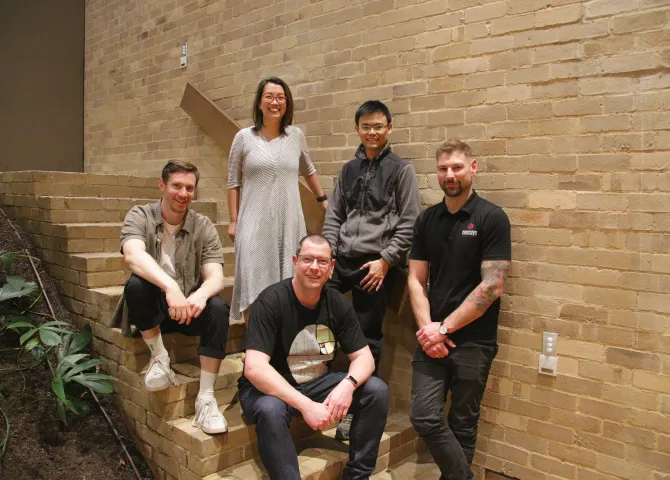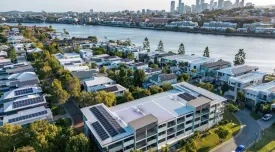Breadcrumb
- Home
- Melbourne Stories
- Predictive climate control for commercial buildings: HAL Systems
Predictive climate control for commercial buildings: Hal Systems
Born out of a love for architecture, being comfortable, and their mid-century home, Vicky and Julian Featherstone created HAL Systems, a predictive climate control solution for commercial buildings. The technology uses weather forecast data to generate predictions about how a building will react to changing conditions. It then takes control of the heating, ventilation and air conditioning (HVAC) in real time to minimise energy use while keeping occupants comfortable.

Why Melbourne?
Founders, Julian and Vicky Featherston are born and bred Melburnians. We’ve got great local connections in commercial building thanks to the design consultancy we ran before starting HAL Systems. This city is the ideal place to find the talent we need for HAL Systems – Melbourne is home to more IT graduates than anywhere else in Australia.
The government also provides incredible support for emerging innovative businesses. For example, HAL received support from the Alice Anderson fund that invests in female-led startups in Victoria. Also, as finalists in the CivVic Labs program for Victorian based climate-tech startups, we were able to develop partnerships with other Melbourne-based businesses crucial to our success.
Challenge
In Australia, commercial buildings are responsible for about 25% of overall electricity use and 10% of total carbon emissions. HVAC usually comprises up to 65% of this electricity. Nonetheless, many of us know what it’s like to sit in a freezing meeting room then walk back into an open office where people are sweating in the afternoon sun beating through large windows.
There is an urgent need for climate tech solutions that improve the responsiveness and energy efficiency of commercial buildings without compromising cost or the comfort of the people inside.
There’s no point in saving energy if people can’t be comfortable. Our results show HAL’s predictive algorithms are able to do both.
Solution
HAL Systems founders, Vicky and Julian Featherston, initially created their predictive climate control system to heat and cool the extreme open plan interior of their own home – the iconic Featherston House designed in 1969 by renowned Australian architect, Robin Boyd. The technology worked so well the Featherstons decided to focus HAL where the need is even greater – commercial buildings.
HAL comprises self-learning AI that calculates a building’s HVAC costs in real time. It accesses diverse data to generate predictions about how a building will react to changing conditions, then controls the building’s HVAC accordingly.
The technology absorbs weather forecast and pinpoint location data, as well as how changes like outdoor temperature, cloud cover and wind will affect a building. HAL also interprets room temperature, humidity and CO2 levels to ‘understand’ specific spaces within a building and make micro adjustments. The outcome optimises the HVAC control throughout the day to make it as comfortable and cost-efficient as possible.
Result
HAL Systems finding combined with scientific studies and energy intensities across numerous different commercial sectors show the technology can reduce energy usage by between 10 and 25%.
They are also working with the University of Melbourne’s Smart Campus Energy Upgrades team to install HAL in a building on Queensbury Street, Parkville, and in discussion with the City of Melbourne to piloting the system in several municipal buildings, including East Melbourne Library and the Library at the Docks.
Retrofit Melbourne
Most cities, including Melbourne have an enormous, almost overwhelming stock of existing buildings that are very unsustainable. Commercial buildings are responsible for nearly 60 per cent of emissions in the municipality. Only a small proportion – about 20% – of the city’s buildings are considered energy efficient.
The majority (about 1,500) are mid-tier buildings that need a substantial ‘green overhaul’ to improve their efficiency, reduce their environmental impact and help the City of Melbourne have all existing buildings ‘zero carbon ready’ by 2040.
“There is immense potential to improve the energy efficiency of mid-tier commercial buildings around Greater Melbourne. From 3-4 storey offices and warehouse retailers to small shopping centres, HAL can add significant value.”
- HAL System Co-Founder, Vicky Featherston





